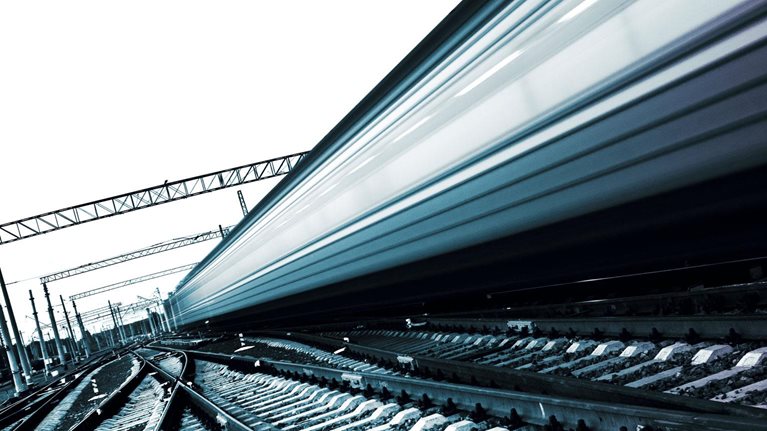The volume of European rail traffic is growing rapidly, making it ever-more important that tracks, signals, and bridges are safe and reliable. The costs of infrastructure maintenance and renewal already exceed €25 billion a year across Europe, and they are rising. Despite this spending, operators are struggling to adequately maintain their assets—resulting in unacceptably frequent delays and cancellations and low levels of satisfaction among rail users.
But there is hope on the horizon. Thanks to the increasing availability and sophistication of advanced analytics, operators have a significant opportunity to create solutions to long-standing maintenance challenges. Harnessing data and analytics could help European rail-infrastructure operators target their maintenance spending more productively.
A pilot study of track segments suggests that operators could reduce maintenance expenditure by up to 30 percent on selected tracks—without compromising current levels of network stability—by reducing overinvestment in less-critical segments. Alternatively, they could improve the stability of their networks at no additional cost by reallocating expenditure to the most critical track segments.
In this article, we highlight the challenges operators face in optimizing maintenance spend amid mounting demand. We also outline a new approach that will enable operators to realize the full potential of analytics solutions and deliver better results for less cost.
Accelerating demand for rail
Rail keeps Europe rolling. Across the European Union, railways transport some nine billion passengers each year—along with 1.6 billion tons of freight.1 And the importance of rail transport continues to grow as networks are modernized, demand increases, and people and governments recognize the advantages of rail over road in terms of speed, safety, and environmental impact.
Europe’s high-speed-rail network has more than doubled in length since 2003, totaling more than 8,400 line kilometers. The volume of passenger traffic has been rising steadily, reaching 450 billion passenger kilometers in 2016—up from 364 billion in 2005.2
The rise of rail is good news for railway-infrastructure operators—but it also increases the pressure to make operations more productive. Rising railway traffic means that infrastructure needs to be in better shape than ever, making maintenance a crucial ingredient in Europe’s mobility, today and in the future. Operators are struggling to find the right balance among lower costs, operational capacity, and necessary maintenance.
A few key figures underline the extent of the challenge. According to a 2018 Eurobarometer survey, only 59 percent of Europeans are satisfied with the punctuality and reliability of passenger trains, and only 66 percent are satisfied with the frequency of trains. On average, one in ten European local and regional passenger train journeys is delayed. Around 2 percent of long-distance, local, and regional journeys are canceled.3
Would you like to learn more about our Public Sector Practice?
Doing more with less
Not only are infrastructure operators struggling to keep trains on time and passengers satisfied, they also face massive and mounting costs. In 2016, expenditure on maintenance and renewal of Europe’s rail networks exceeded €25 billion, most of it publicly funded. That figure was a steep rise from the €20 billion spent in 2011—and made up more than half the total expenditure on rail infrastructure (Exhibit 1).

Budgets for railway maintenance are strained, and infrastructure operators across the continent are looking for ways to do more with less. It is also critical that operators gain control over maintenance costs now, before technology advances in road transport make rail less cost competitive. Those advances include automated highway systems, which will enable “platooning”—the electronic coupling of trucks or cars to shorten the distance between them and thus increase road capacity. Eventually, fully autonomous trucking and private cars may push down the cost of road transport even further.
It will be no easy matter for operators to bring down maintenance costs, however. With ever-greater pressure on the network, operators face an increase in unpredictable work such as urgent repairs and re-planning—which substantially increases costs. Our interviews with executives at European rail-infrastructure operators pinpointed the following issues:
- Budgeting processes are top down, while maintenance works themselves are planned and implemented from the bottom up, at regional and local levels.
- Operators typically spend funds on individual assets without considering interdependencies with other assets—which can lead to different levels of quality on one connection.
- While many operators have established qualitative evaluation mechanisms for asset quality, there is no overall measure of asset performance that would allow operators to compare performance between assets and evaluate the effects of maintenance works on future performance.
- It is difficult to assess both the condition of assets and the effect of maintenance on those assets.
A new approach: Harnessing analytics to optimize investment
Analytics can help operators effectively compare actual maintenance activity across a rail network with the optimal state. That, in turn, should allow operators to identify and capture significant cost savings—and improve the reliability of their networks.
In our discussions with European rail-infrastructure operators, we found that executives have been trying to address these challenges for a long time. If the suggested approach proves successful, it will have great value for operators in terms of cost efficiency.
A leading European rail infrastructure operator tested the approach in its track segments across four pilot routes (see sidebar, “A unified approach to optimizing rail maintenance spend”). As part of the effort, the operator gathered, cleaned, and structured data on maintenance performance and cost.
Analysis showed that the operator had the potential to reduce its maintenance expenditure by 15 percent to 30 percent while maintaining the same level of network performance it achieves today. Here, performance is defined as network quality and stability in terms of the number of slots that are expected to be kept across all routes. Alternatively, the operator could achieve significant improvements in network stability without spending more.
By mapping the probability of failure (“vulnerability”) of each rail segment and the severity of it failing (“criticality”) in the routes under study (Exhibit 2), the operator was able to identify several lower-criticality segments where there was possible overinvestment in maintenance. But there was also evidence of possible underinvestment in several critical segments that tolerate little vulnerability.

That analysis, in turn, pointed to likely mismatches in the distribution of maintenance funding across the operator’s track network (Exhibit 3). In the most critical segments, maintenance spend per meter of track was relatively low, pointing to likely underinvestment. In some less critical segments, however, spend per meter was around five times as high, pointing to likely overinvestment. That suggests there is a key opportunity to redistribute spending more uniformly to the most critical segments across the network.

Operators will need to equip themselves with the right capabilities and data before they can start deploying this methodology at scale and gather insights from the analysis. First, they must put data-governance practices in place, establishing guidelines and principles relating to which metrics are tracked, storage, feedback loops on quality, and ownership and access rights.
Second, operators must streamline their processes for data collection and management. This will require them to overcome several data challenges. Currently, most operators either fail to collect all the relevant data on maintenance spending or collect it in a way that makes it difficult to work with, is inaccessible, or is separated into different departments. In this scenario, a central team might only be able to access some of the data. Data formats vary among rail OEMs and diagnostic systems (for example, ultrasonic nondestructive testing methods), and different diagnostic systems identify locations differently. Operators need data identifiers and translation interfaces that can convert the reported data to a consistent format that can be analyzed.
Last, operators need to build the analytical skills and data literacy of their workforces, training employees on both data collection and analytical methodology. Operators can establish these processes and develop the necessary talent by running a pilot in one asset class. They can then learn from this experience to improve their approach before applying it in other asset classes.
Going forward, the relevant capabilities need to be deeply embedded in the organization. Above all, employees and members of the management team should be encouraged to embrace the possibilities of advanced analytics and data-based operations and learn to interpret results generated by new technologies. Such translator capabilities are best conveyed in specific training formats such as an analytics academy targeting all levels of the organization.
Internal capability building can be complemented by the introduction of new roles and specific teams, including data scientists and digital designers. Furthermore, the organization must think strategically about how to implement common tools and methods to extract and clean data in a consistent, comprehensive way. In addition to an increased focus on technology, a cultural shift toward data-driven decision making is a prerequisite both for successful implementation and effective use of advanced analytics in asset management. This fundamentally alters the way these organizations operate internally.4
One of the most important ingredients of this transformation is an active change-management process with three additional core elements: building conviction among leadership and teams through a compelling change story and communication plan; establishing incentives to help achieve the desired outcome; and modeling the desired change at the senior leadership level.

The rail sector’s changing maintenance game
Taking action now
Infrastructure operators have several opportunities to maximize their investments by applying this approach. The first step is to evaluate individual operators’ maintenance spending and performance to guide the distribution of future budgets—or to benchmark past allocations. For example, an operator could establish a fixed maintenance budget that optimizes performance at the lowest possible cost.
Operators also have an opportunity to compare the investment productivity—the money invested to achieve a particular level of performance improvement—of various regions and countries. By encouraging shared learning and problem solving, this approach can put European rail on track for rapid growth, sustained high performance, and happy customers across the continent.
Railway infrastructure operators have long been searching for the holy grail of maintenance-cost optimization. Today, analytics put that prize within reach. If infrastructure operators act now, they can focus on allocating spending to where it matters most—and thus improve the performance, attractiveness, and promise of European rail.


